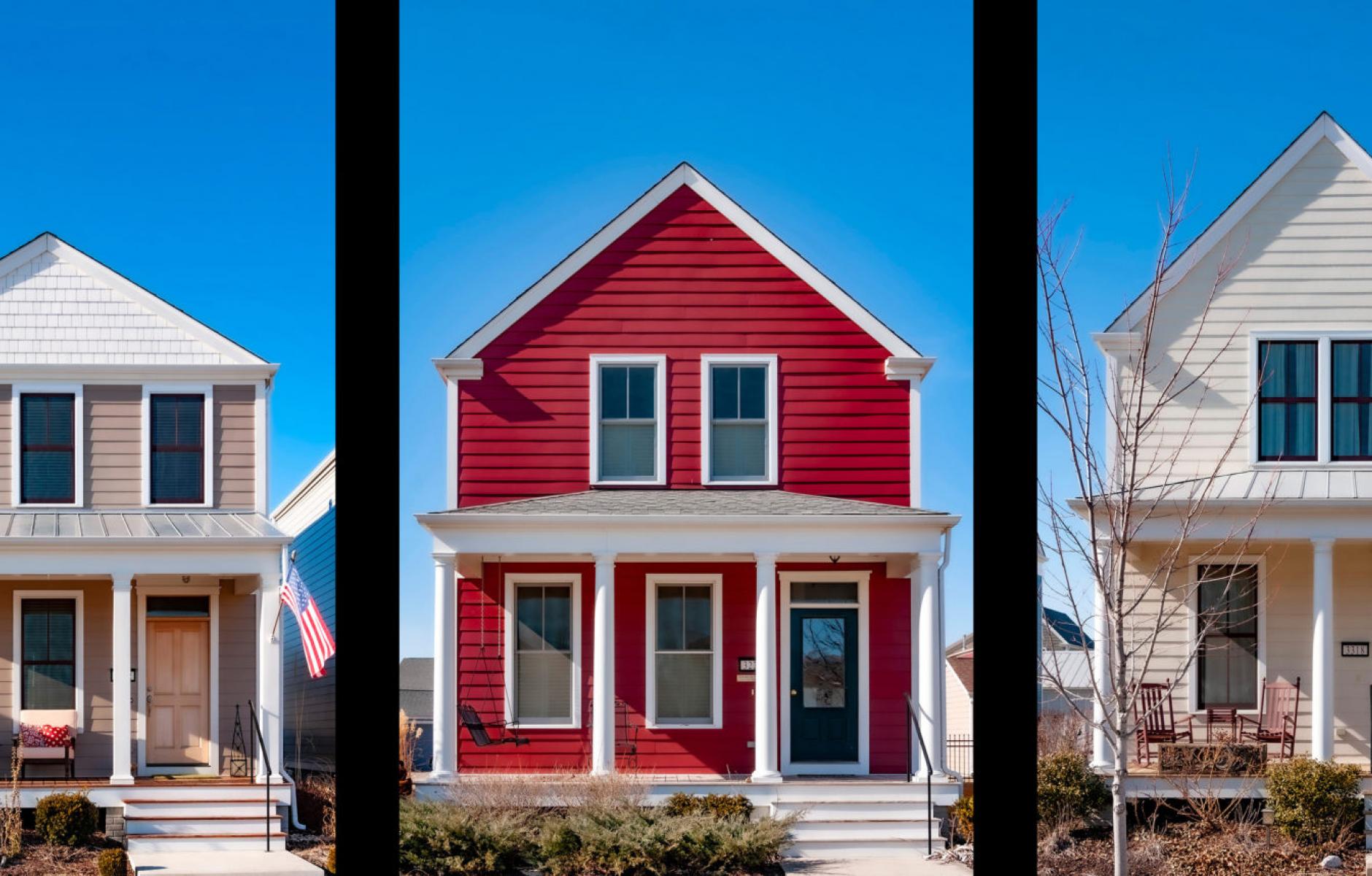
How to create real housing affordability, with dignity
The U.S. housing shortage is most severe on the more affordable side of the market. At a time when costs are escalating broadly and homes that were recently attainable by many have moved out of reach of most, this is no surprise. The problem is most acute in the heated markets, of course, where affordability mandates and rent controls seek to retain rental affordability for some, as owning a home in such markets is a dream accessible only to the wealthiest. (No measures in this post have any impact on these markets.)
In the majority of the U.S. where home ownership is still possible for most, affordable housing is considered achievable by government mandates and subsidies, but we have all heard the narratives on the struggles of building affordable homes using these measures, and the fierce resistance of places targeted for their construction. This isn’t one of those stories. Instead, this post looks at a number of core affordability facts that are usually ignored, then lays out patterns useful in providing enduring affordability in communities built by private-sector, for-profit developers. New Town at St. Charles, near St. Louis, is one such place, and some houses sold there for years for under $100,000. (All images in this article are from New Town.)
“Enduring affordability” means that a broad range of affordability endures over time in a community, even though market forces may increase the values of individual homes. Home values not allowed to escalate by any means are unfair to their owners; why should they not be permitted to participate in building generational wealth in their homes?
“Enduring affordability with dignity” is a higher standard usually considered impossible, because it means that a range of affordability endures over time in a place that reinforces self-respect and pride of place, or “places people love,” if you prefer. How is it possible for home prices to not get quickly bid up in places like this? Let’s consider enduring affordability first, then revisit the question of dignity.
There are two paths to enduring affordability in a community: The first begins with the proposition that development isn’t complete when the last lot is built out; that is, instead, the point at which the maturing of the community begins. A maturing community adds accessory units on existing sites, and adds intensity to “missing middle housing” (more on this later) in the community. In-parcel development patterns now common in the U.S. include Accessory Dwelling Units (or ADUs, like a Granny Cottage) and, more recently, Accessory Commercial Units (or ACUs, like a home workplace).
While homes affordable to many in the beginning of the first path will naturally appreciate, new homes coming online refresh the range of affordability of the place. This proposition seems foreign today because we are so accustomed to homeowners’ associations, which freeze subdivisions in their original state of development, like insects trapped forever in amber. Traditional American towns, however, have always matured like this over time.
The second path is an older and more refined route to maturity. The primary difference is that while the first path keeps the original lots intact, the second path allows landowners to subdivide their lots, making all property owners mini-developers of their land parcels. This method has been used around the world since antiquity; almost all of the most-loved places on earth were developed this way. It has recently been codified into a process known as the Sky Method, to work in today’s American development system. (“Sky” is the name of the town for which it was first developed.)
The first step down either of these paths to enduring affordability is to lay important groundwork with the local zoning authority to make affordability possible. There are four things the market, not the zoning authority, should decide for a place: the size of your home, how many off-street parking spaces you have to build, whether you can work from home, and whether you can have anyone else living at your place to help pay the mortgage. Remove these bureaucratic burdens, and naturally occurring affordability is conceivable; allow them to remain, and the only chance of affordability is subsidy, imposed politically.
One problem with politically imposed affordable housing is that it lasts only until political will changes, so it is not enduring. Another problem is the fact that any mention of an affordable housing project brings ferocious opposition, so it is deemed more efficient to do fewer but larger projects for the poorest, but this concentrates poverty, which has many deleterious effects, which creates places where nobody wants to live if they have any choice at all because they are places without dignity.
The terms “affordable housing” and “an affordable home” are used purposefully in this post. Affordable housing is a product of the Industrial Development Complex, produced most efficiently at great scale (with the problems just noted). An affordable home is singular, a home I can afford.
I can impart a level of dignity to my home with acts of love. Most elements of places with dignity, however, are things shared throughout the community so they don’t burden each home individually. Dignity comes in part by being able to do for others, but that happens best when you actually know others. So places with dignity are designed in such a way that people naturally meet and get acquainted. Dignity also comes from being able to do for ourselves, so places with dignity are designed to let us get around to our daily needs without the burden of driving. And one of the greatest sources of dignity is the ability to do meaningful work, so places with dignity allow people to make a living where they’re living if they so choose. And the dignity of doing meaningful work in the affordable place where you’re living has benefits beyond your community, as it ends the great separation that has for decades driven home and work further apart, forcing compulsive commuting which is one of the chief causes of climate change. This may end up being the greatest benefit of building places of enduring affordability with dignity because it benefits us all.
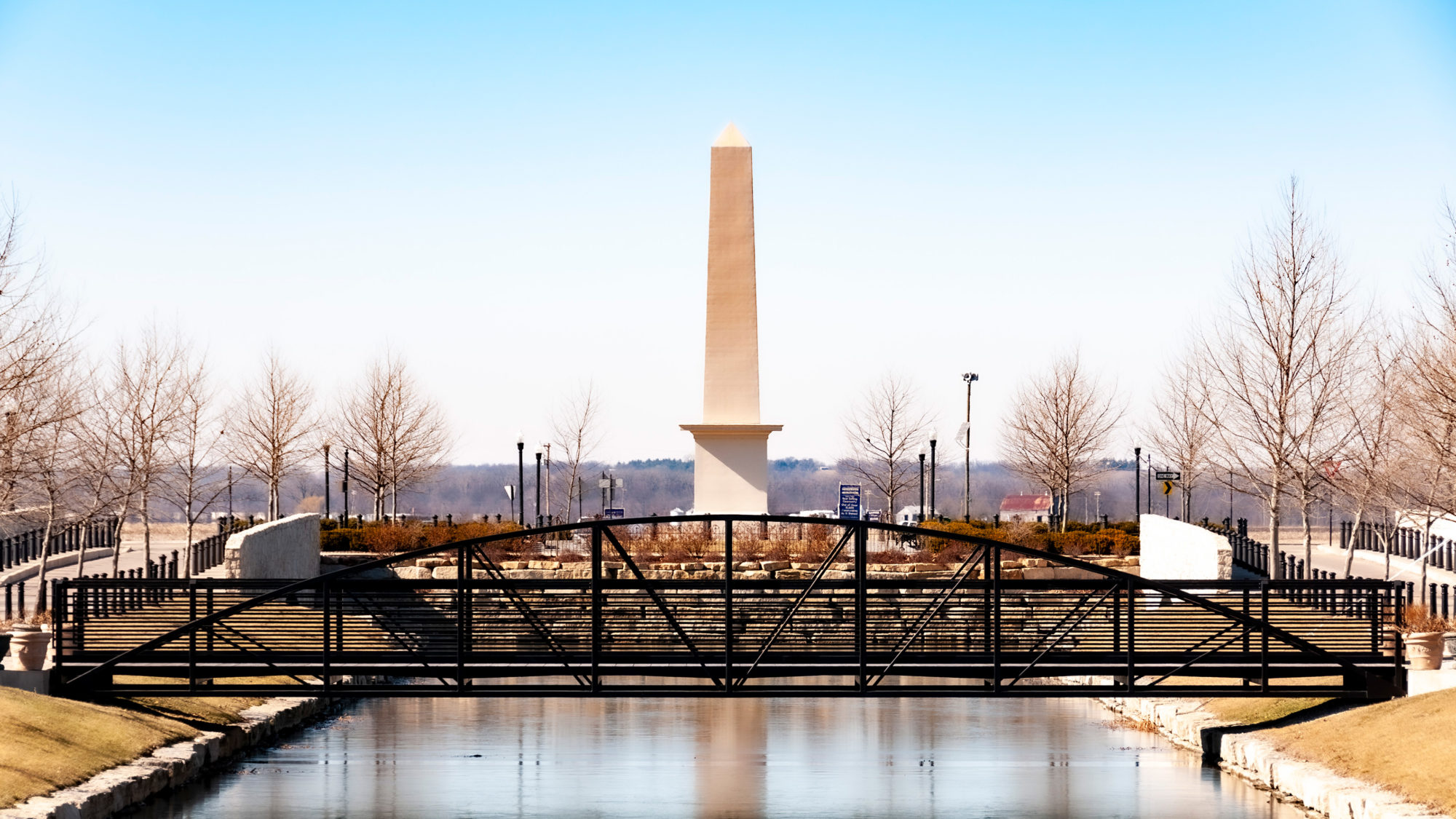
The basic principles for providing a range of affordability without government mandates or subsidies are surprisingly simple, beginning with wide market diversity. If long lines of people are ready to write a check higher than the listing price on a property for sale, that means there’s not nearly enough choice in the market. When real estate becomes a bidding war, a range of affordability is impossible; when there is much wider choice, far fewer people are competing for each home for sale. This also means that people are far more likely to find a home that’s perfect for them, something that’s unlikely in a one-size-fits-all market.
Market diversity begins with building type. The concept of Missing Middle Housing was developed in response to the fact that most markets have only two housing types: the single-family home (detached or townhouse) and the condo. Most Missing Middle types are classics, long found in American towns and cities, but discarded in postwar development. They range from the twin (formerly known as the duplex) to courtyard buildings and live/works of several types.
The second type of choice is choice of place, from rural to urban. Some want a view into nature, others choose to be right in the center of the action, and others prefer a quiet neighborhood street. Small American towns provide this choice naturally, whereas large cities have to work at it by providing a network of parks and greenways for views into nature. Subdivisions rolling on endlessly provide none of this choice.
The third choice type is the range of expression in the architecture. Vernacular architecture has been the greatest source of affordable homes in human history; it is least expensive and most charming. Refined architecture is more expensive and most elegant. Everyone has a comfort level at some point on the spectrum of expression.
These are some of the patterns that have allowed New Town to build a wide range of affordability with dignity. And the range of affordability is a crucial element of dignity. Because the range is wide, New Town’s homes range from cottages to mansions, but because the architecture is neighborly, there’s no sense of a “rich side” and “poor side” of town.
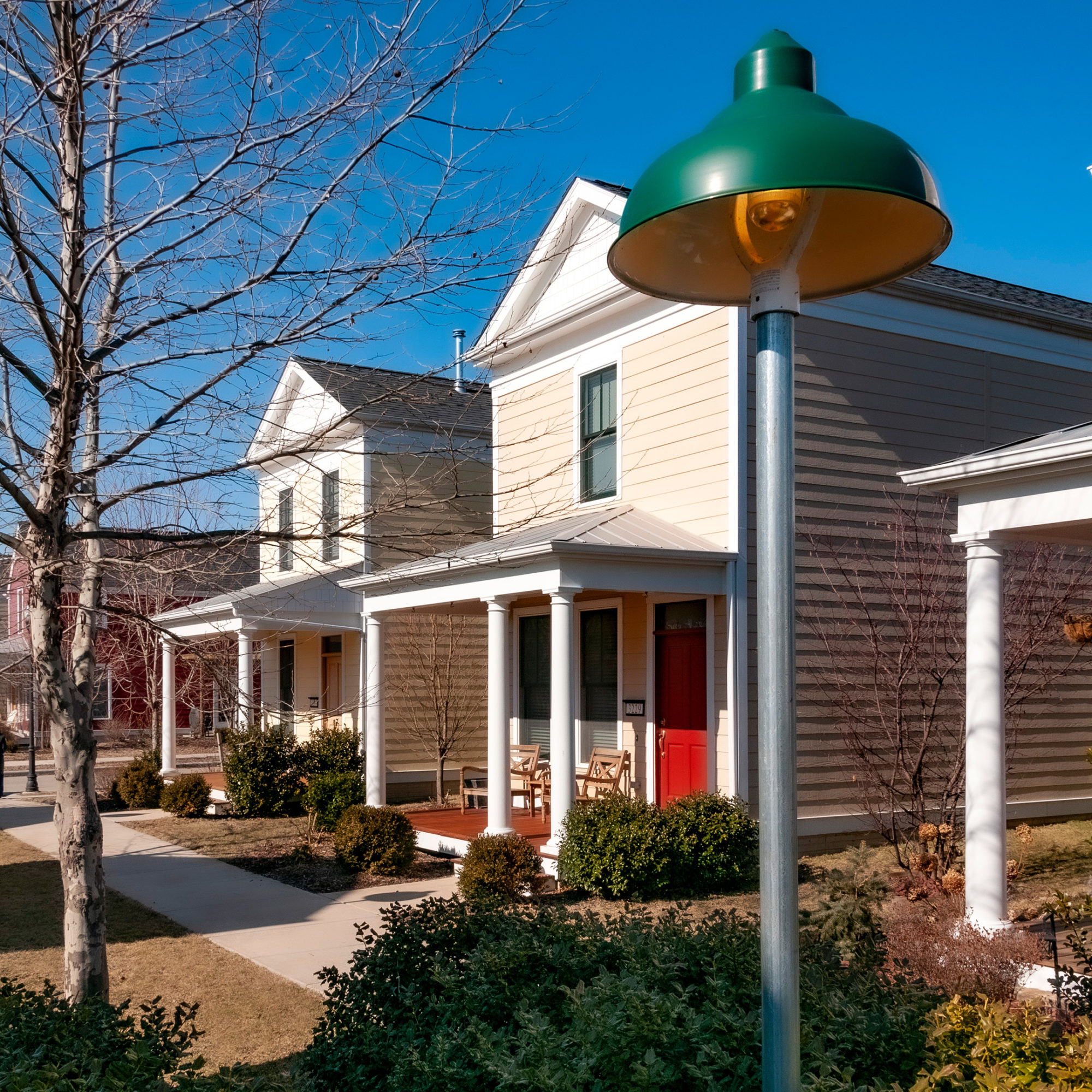
New Town has achieved durable affordability with smaller and simpler designs, meaning that it will retain its affordability over time in part because each house type is laser-focused on its market segment instead of trying to be all things to all people. This limits the bidders.
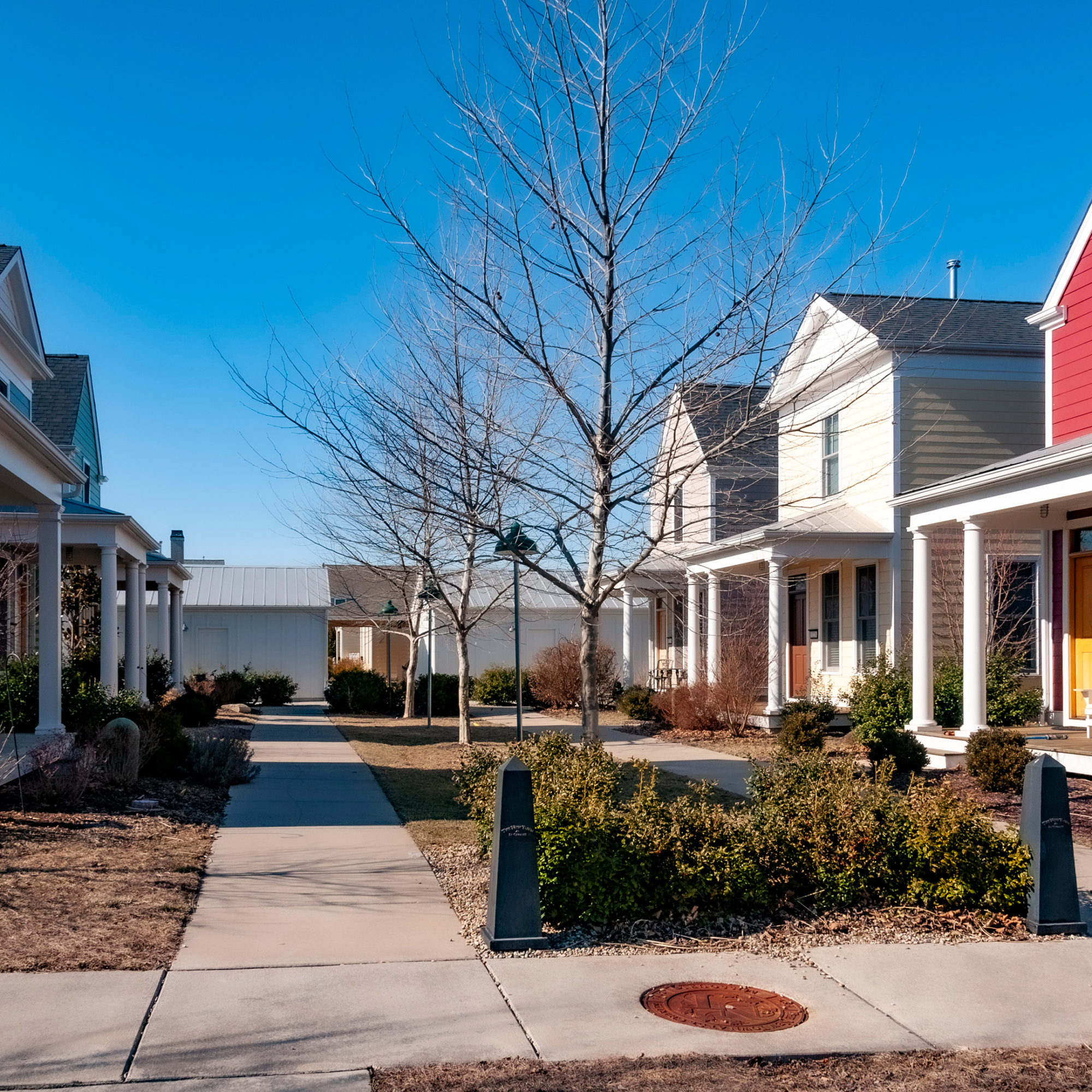
DPZCoDESIGN planned New Town at St. Charles with several excellent cottage courts. Because there are no cars on the court, porches can be lower while maintaining walk appeal, saving on foundation costs.
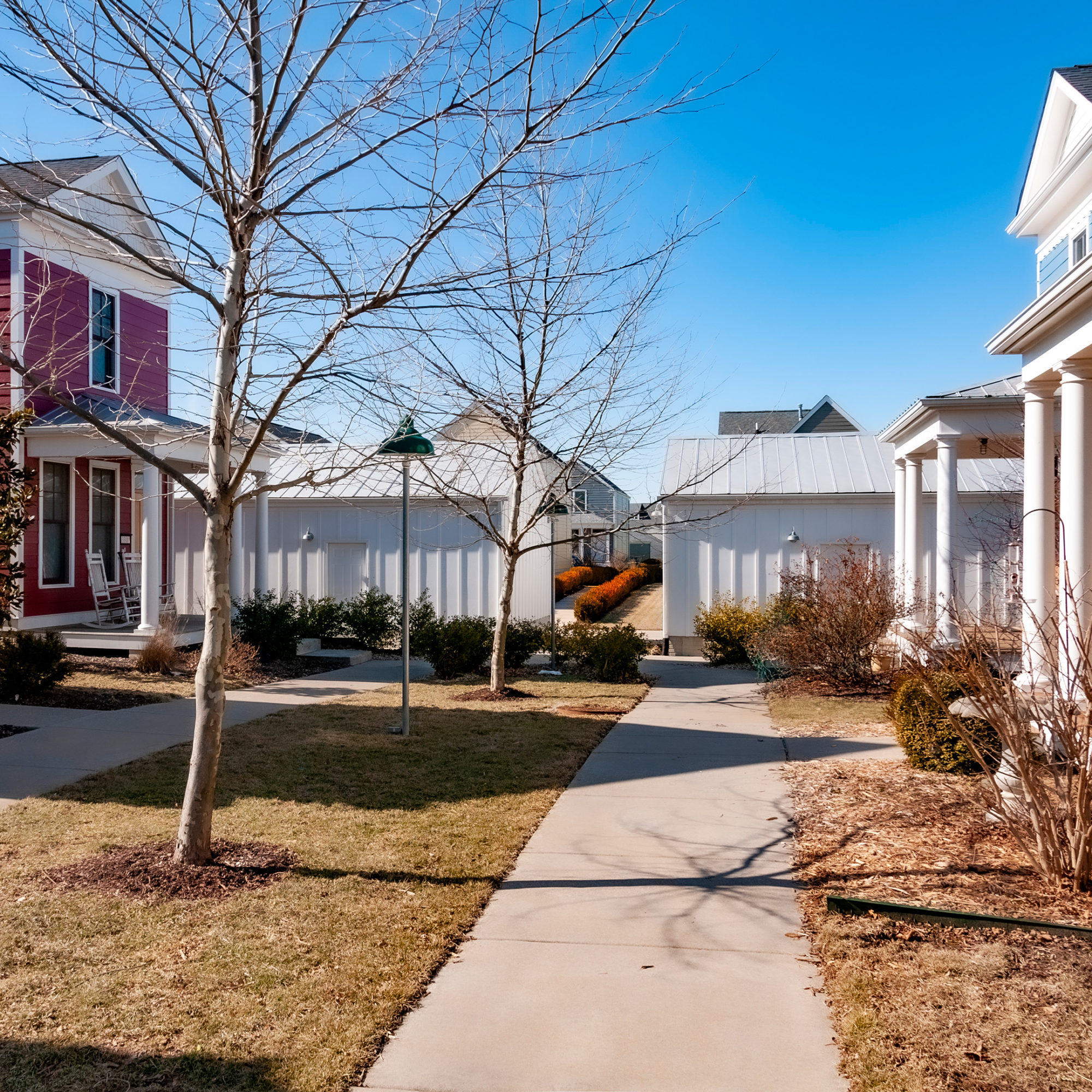
The white board and batten buildings at the rear of this cottage court are garages opening onto a parking court beyond, which is far more efficient than burdening each cottage lot with a garage. This saves thousands per cottage.
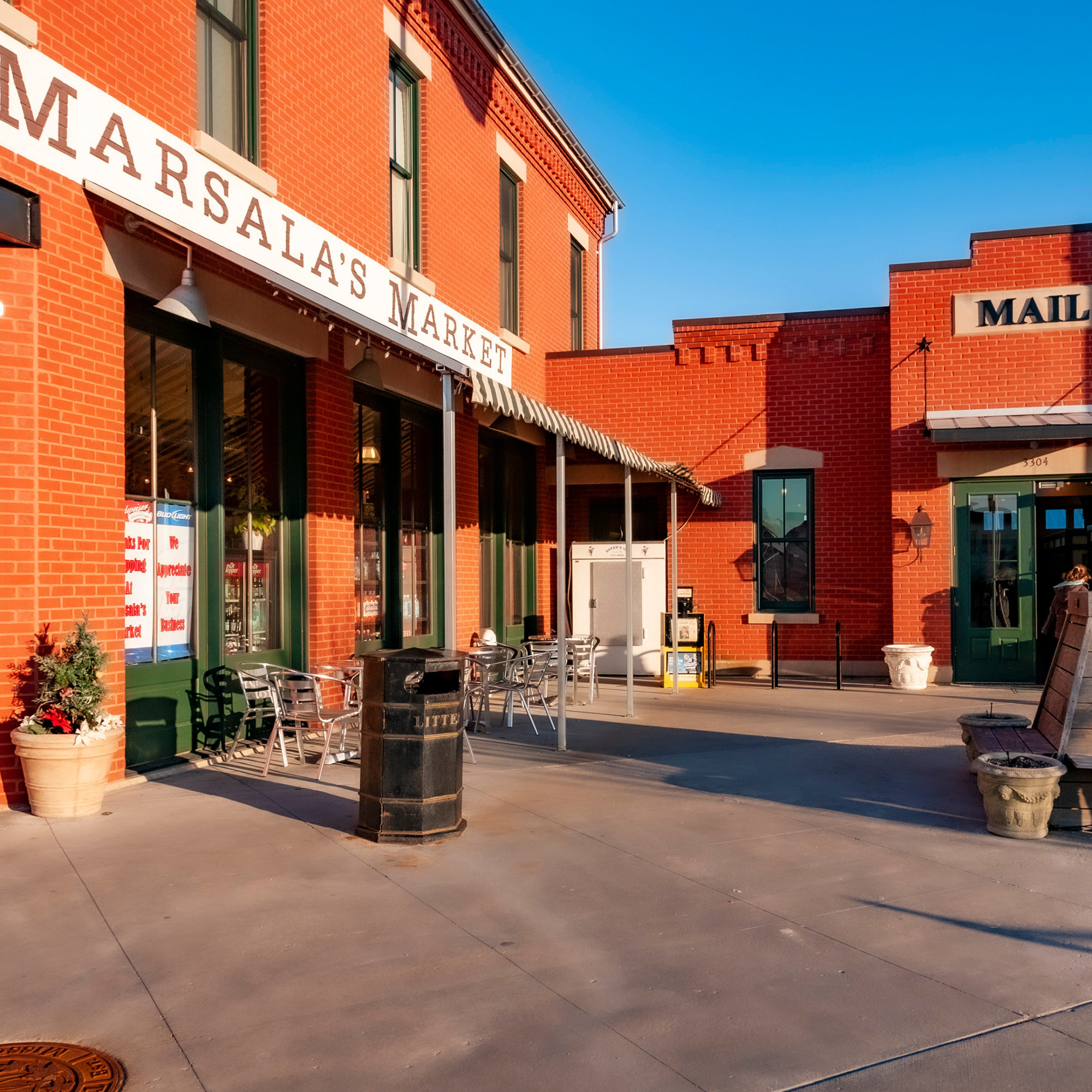
A huge key to durable affordability is the ability to walk or cycle to your daily needs. Build a neighborhood grocery, and other daily needs will come as well. Put neighborhood mailboxes (USPS doesn’t do new home delivery) in a neighborhood-managed post office nearby.
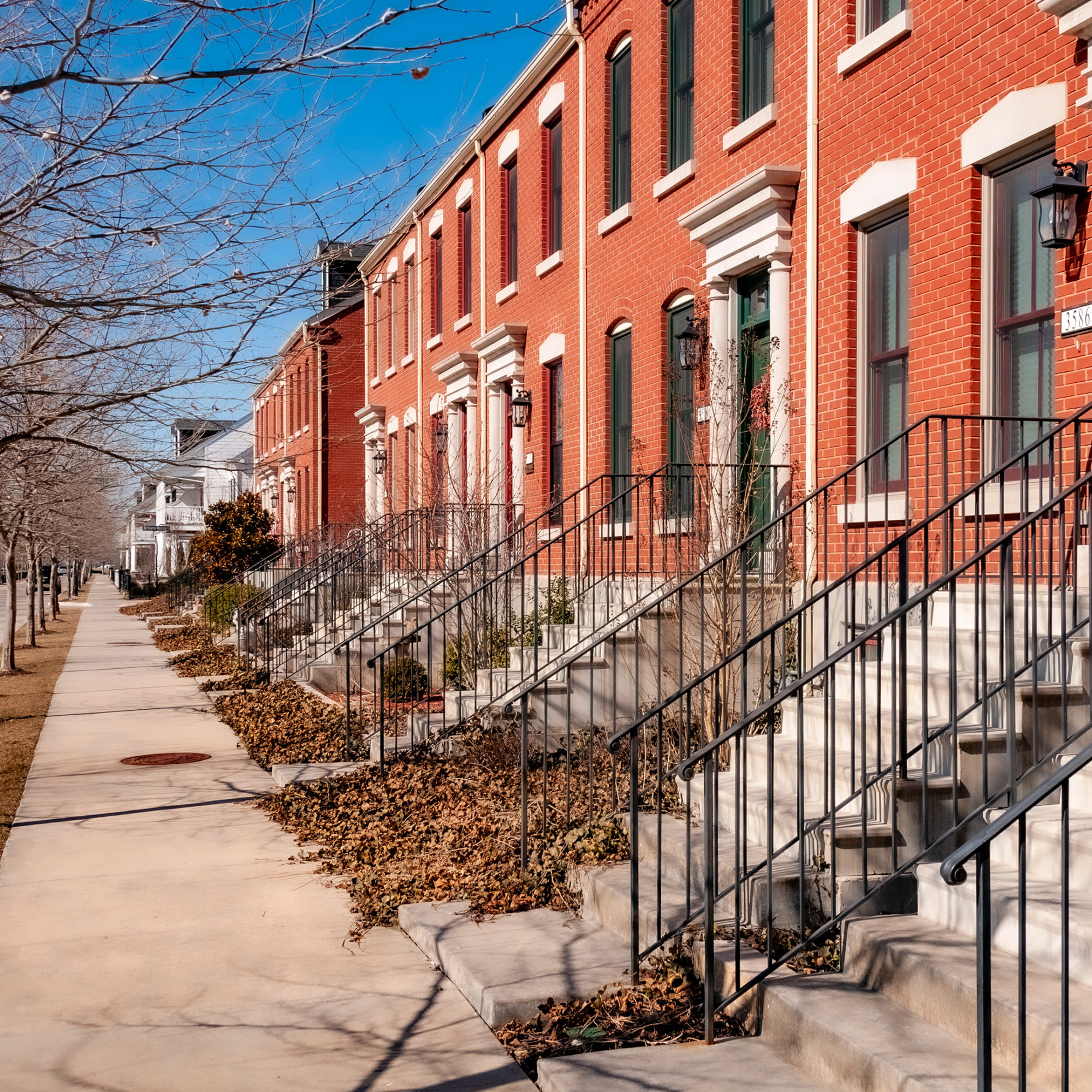
New Town townhouses were detailed for affordable dignity in patterns long-loved locally. When you’re building attached units, the long walls are shared with neighbors so you can afford a nicer front with little impact on total price.
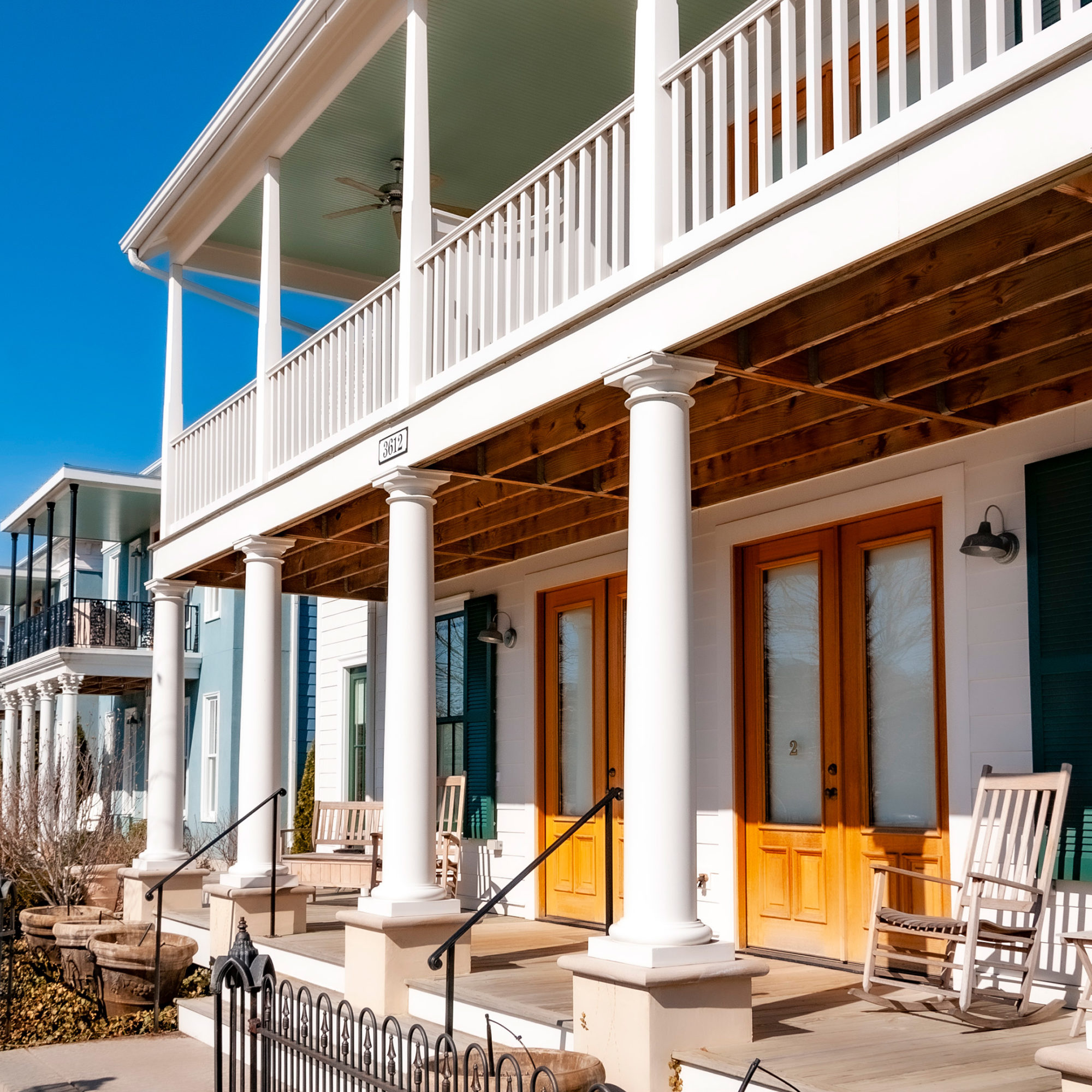
Ceilings on two-story porches are notorious for leaking, but New Town eliminated the problem by leaving the ceilings open. “But what about rain leaking through on you,” some ask? If a blowing rain is getting the floor above wet, it’ll definitely get you wet, too. So go inside.
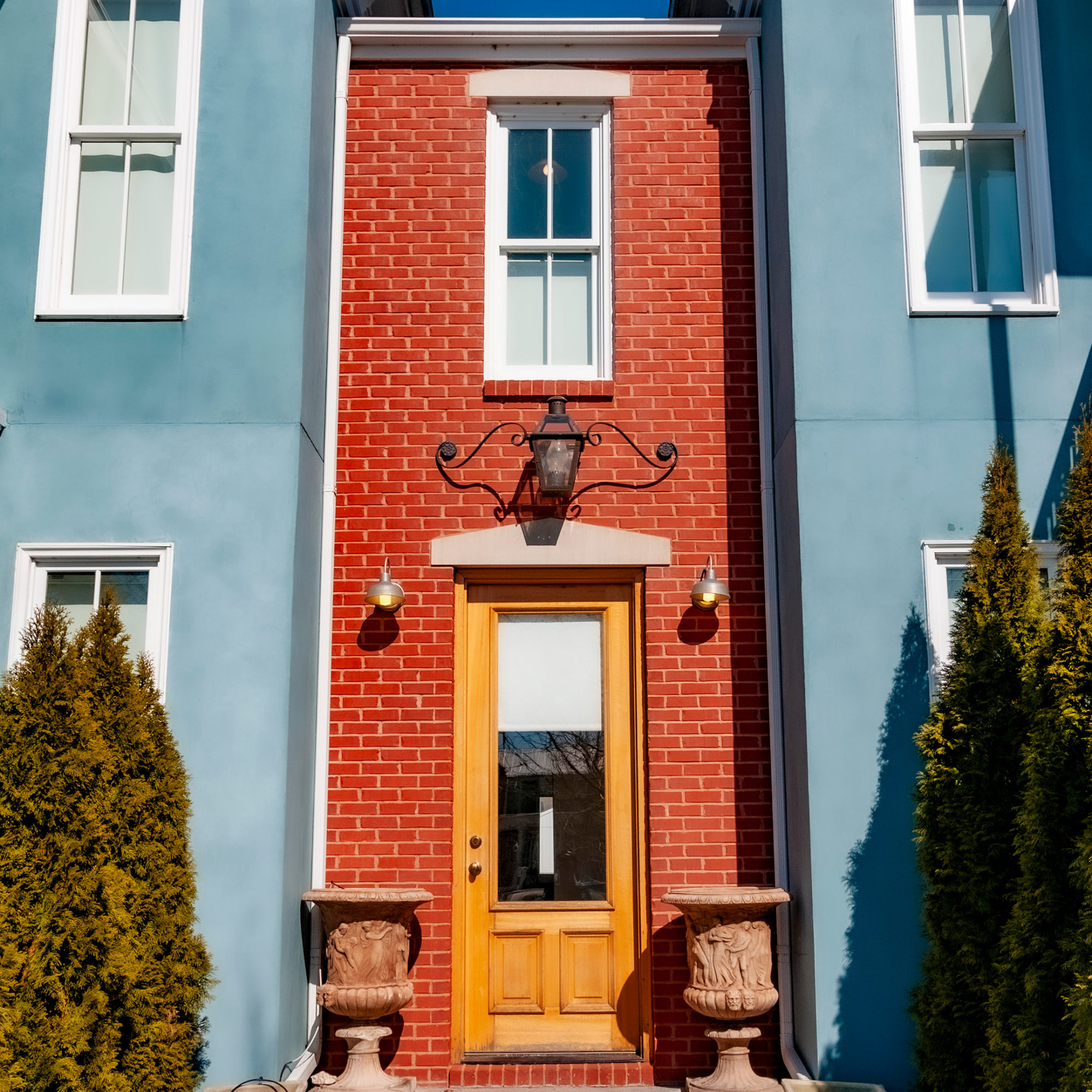
Everyone loves a tiny building along the street: a tiny cottage, tiny house, tiny shop, and even a tiny townhouse, like this one at New Town. I’m pretty sure this is the front door to one of the adjacent townhouses, but it’s no less charming, and brings a smile to all who walk by.
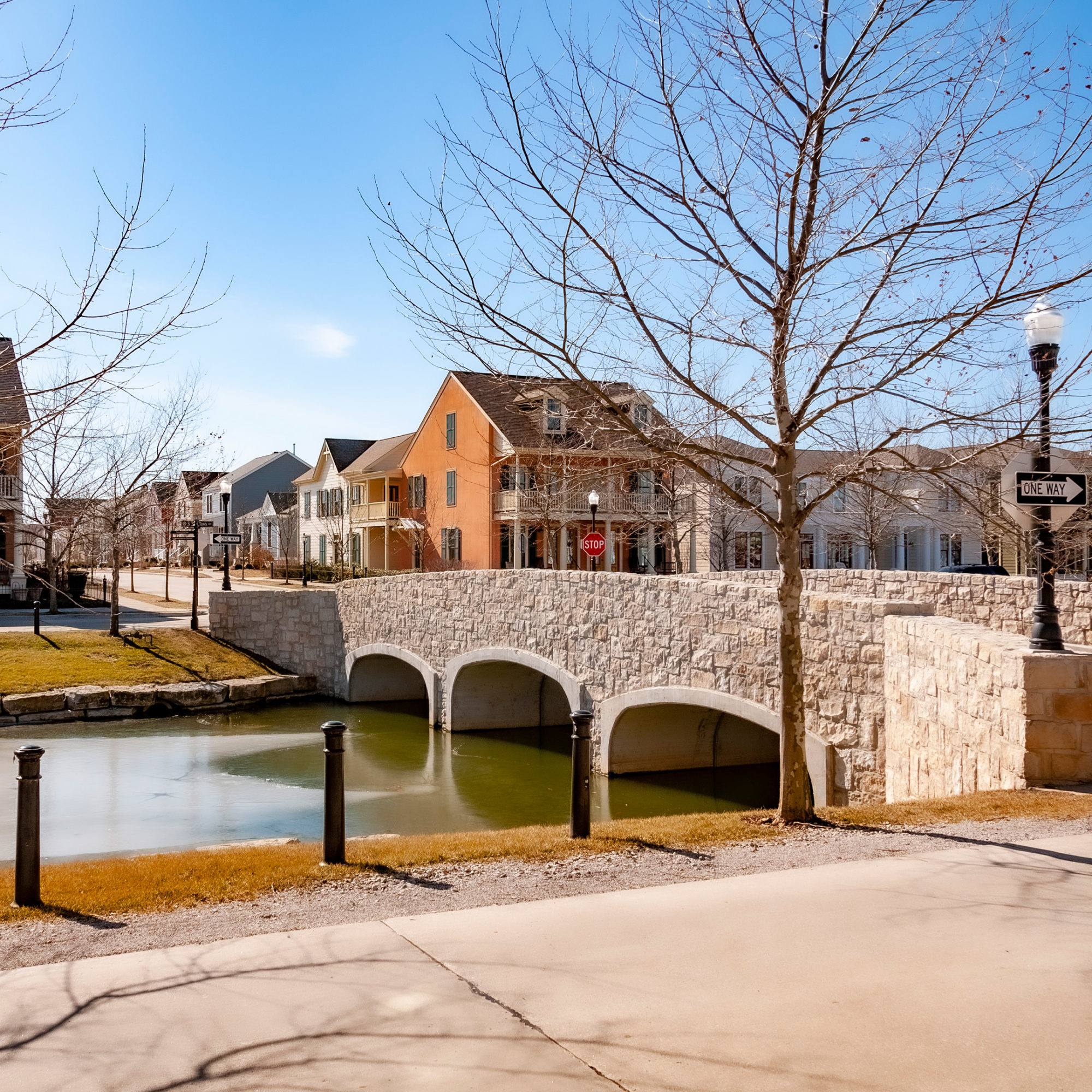
Affordability with dignity relies heavily on infrastructure where each dollar spent elevates the experience of many. Look closely at this stone bridge: the bridge structure is readily available concrete culverts; just the facing is stone. This benefits many with a nearly negligible expense.
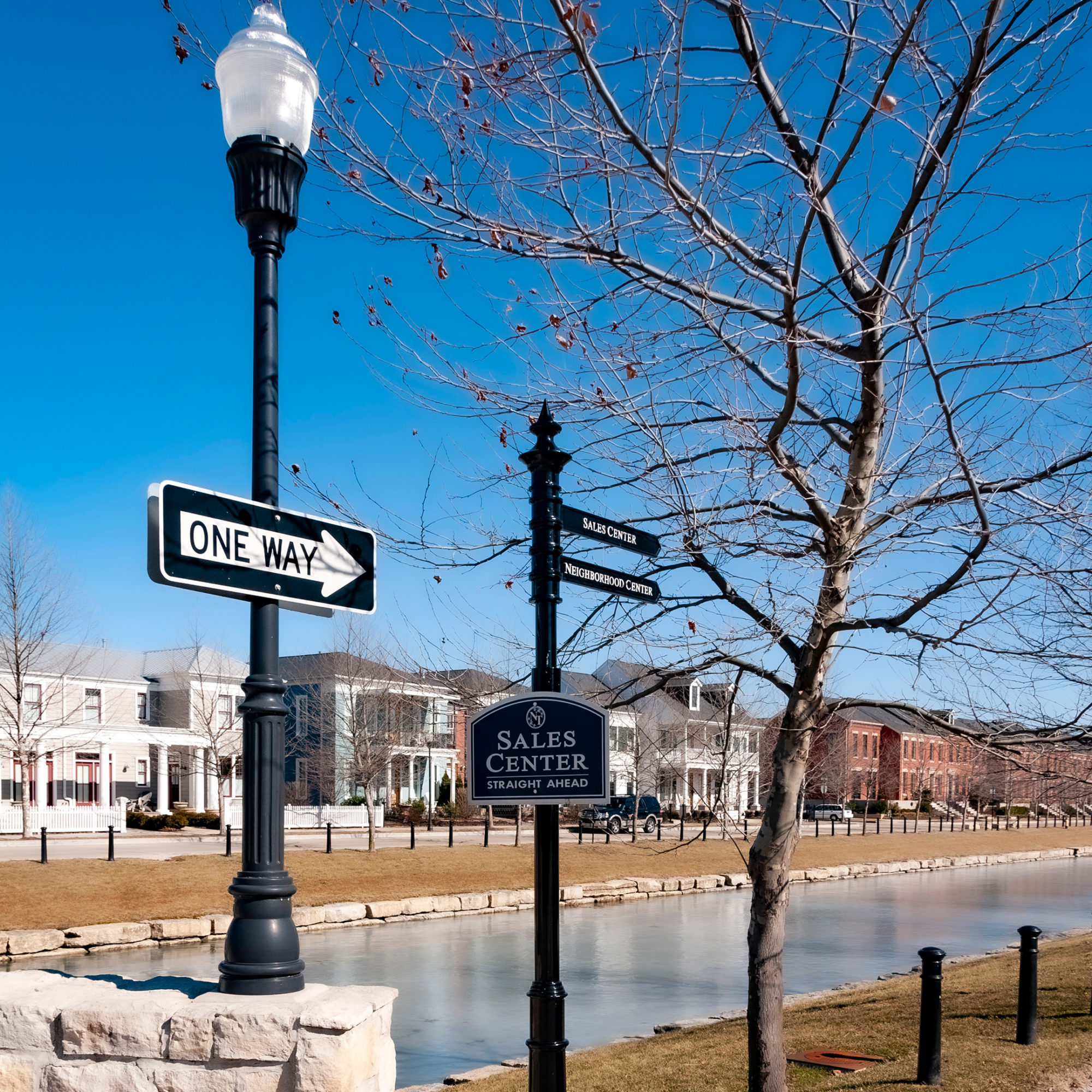
Civic furnishings like street lights and street signs are a vanishingly small part of the construction cost of the town but contribute to the dignity of the place by making it obvious it is cared about. Affordability with dignity depends on signs of care.
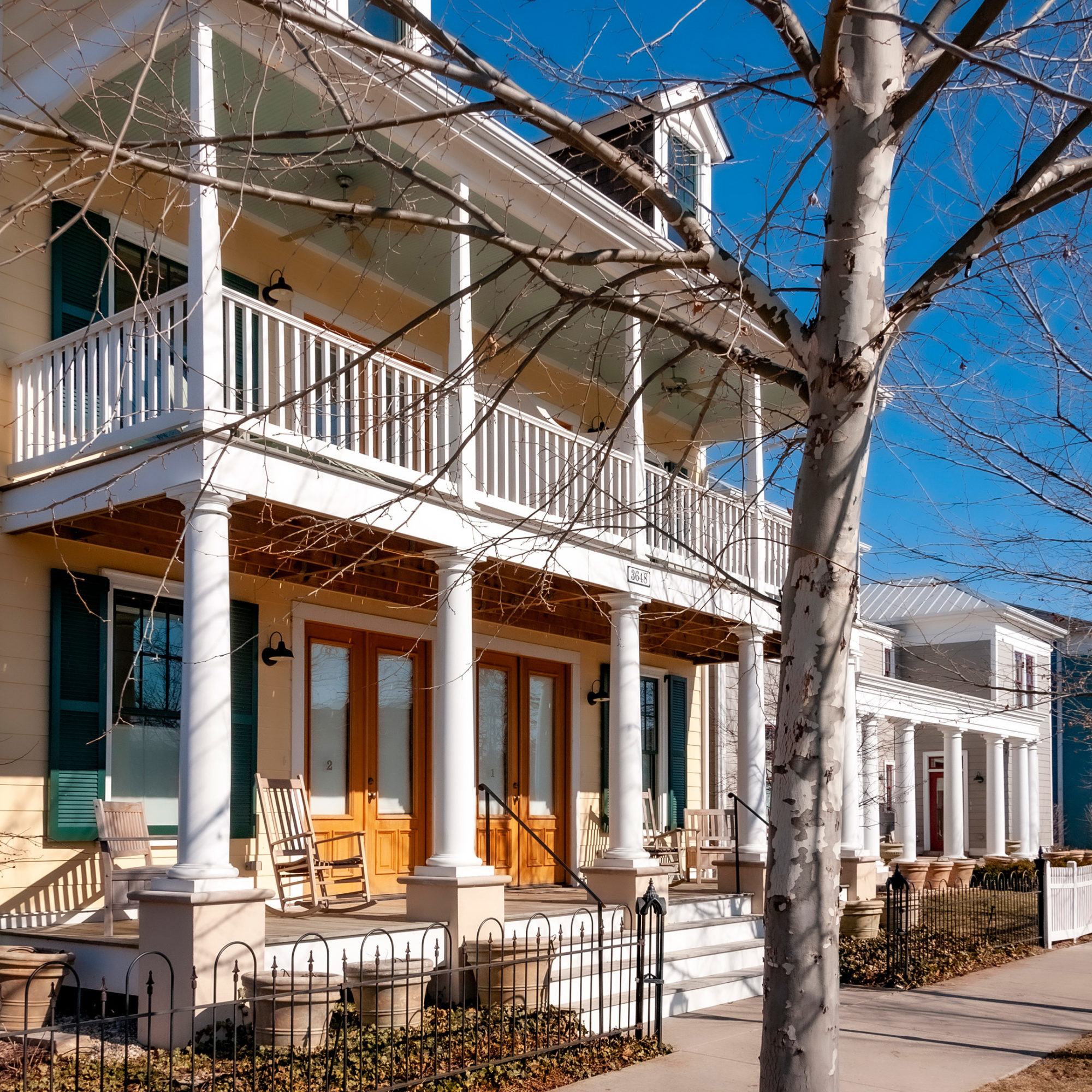
Of all the civic elements lining a street, none increase in value or have broader positive ripple effects than street trees. This picture was taken a dozen years ago; today the trees on either side of this street create a complete canopy, providing continuous shade for people walking to the town center.

The first and last infrastructure you see in a place is the entryway. Usually it’s a portal of sorts, but even if left forever ungated, it implies you might not be welcome there. New Town’s obelisk is instead a landmark that simply indicates: This is an important place.
This piece was published in Common\Edge




